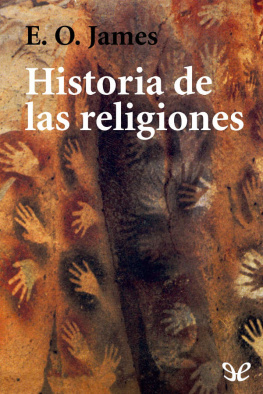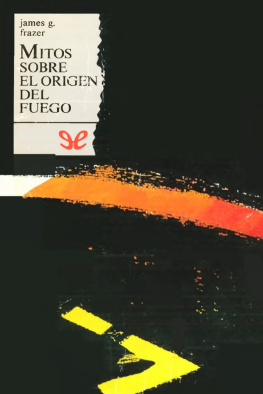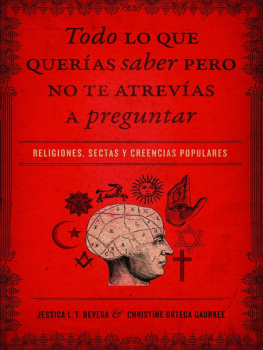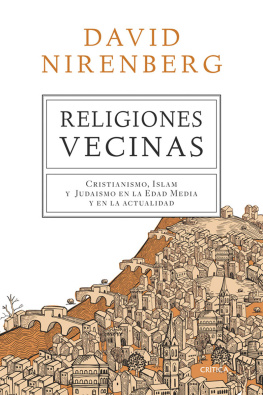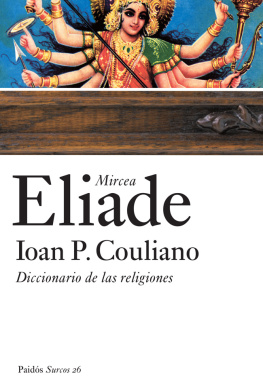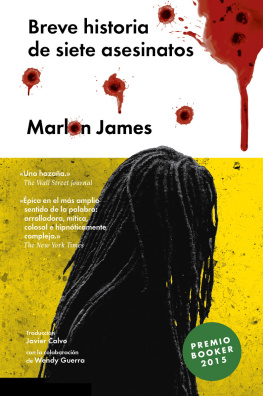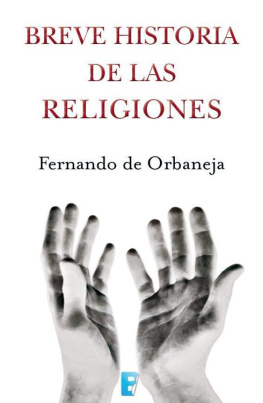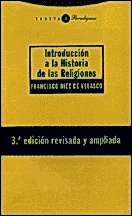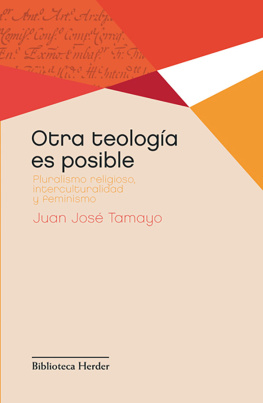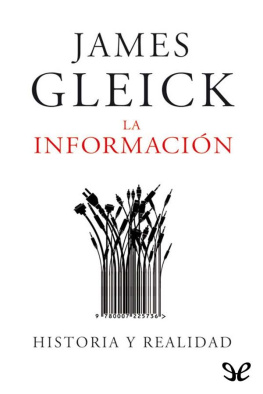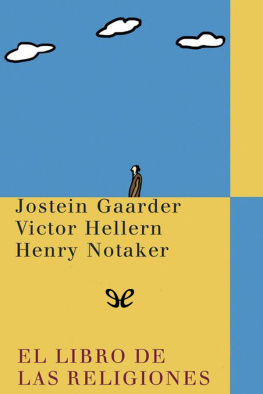E. O. James - Historia de las religiones
Aquí puedes leer online E. O. James - Historia de las religiones texto completo del libro (historia completa) en español de forma gratuita. Descargue pdf y epub, obtenga significado, portada y reseñas sobre este libro electrónico. Año: 1956, Editor: ePubLibre, Género: Historia. Descripción de la obra, (prefacio), así como las revisiones están disponibles. La mejor biblioteca de literatura LitFox.es creado para los amantes de la buena lectura y ofrece una amplia selección de géneros:
Novela romántica
Ciencia ficción
Aventura
Detective
Ciencia
Historia
Hogar y familia
Prosa
Arte
Política
Ordenador
No ficción
Religión
Negocios
Niños
Elija una categoría favorita y encuentre realmente lee libros que valgan la pena. Disfrute de la inmersión en el mundo de la imaginación, sienta las emociones de los personajes o aprenda algo nuevo para usted, haga un descubrimiento fascinante.
Historia de las religiones: resumen, descripción y anotación
Ofrecemos leer una anotación, descripción, resumen o prefacio (depende de lo que el autor del libro "Historia de las religiones" escribió él mismo). Si no ha encontrado la información necesaria sobre el libro — escribe en los comentarios, intentaremos encontrarlo.
Historia de las religiones — leer online gratis el libro completo
A continuación se muestra el texto del libro, dividido por páginas. Sistema guardar el lugar de la última página leída, le permite leer cómodamente el libro" Historia de las religiones " online de forma gratuita, sin tener que buscar de nuevo cada vez donde lo dejaste. Poner un marcador, y puede ir a la página donde terminó de leer en cualquier momento.
Tamaño de fuente:
Intervalo:
Marcador:
Capítulo 1:
Burkitt, M. C., Prehistory, Cambridge, 1925; The Old Stone Age, Cambridge, 3ª ed., 1955.
Evans-Pritchard, E. E., Witchcraft, Oracles and Magic among the Azande, Oxford, 1937; Nuer Religión, Oxford, 1956.
James, E. O., The Beginnings of Religión, 1948 (bibliografía).
Luquet, G. H., The Art and Religion of Fossil Man, Oxford, 1930.
Malinowski, B., Magic, Science and Religion, Boston, Mass., 1949. Marett, R. R., The Threshold of Religion, 1914.
Radin, P., Primitive Religión, 1938.
Capítulo 2:
Breasted, J. H., Religion and Thought in Ancient Egypt, 1914.
Frankfort, H., Ancient Egyptian Religion, Chicago, 1948; Kingship and the Gods, Chicago, 1948; The Intellectual Adventure of Early Man, Chicago, 1947 (edición Pelican, 1949, con el título Before Philosophy).
Hooke, S. H., Babylonian and Assyrian Religion, 1953; editor de Myth and Ritual, Oxford, 1933.
Meek, T. J-, Hebrew Origins, Nueva York, 1950.
Rowley, H. H., From Joseph to Joshua, Oxford, 1950.
Oesterley, W. O. E., y Robinson, T. H., Hebrew Religion, 1937.
Capítulo 3:
Bouquet, A. C., Hinduism, 1950.
Deussen, P., The Philosophy of the Upanishads, Edimburgo, 1906. Eliot, C., Hinduism and Buddhism, 1921.
Humphreys, C., Buddhism (Pelican), 1951.
McGovern, N. M., Introduction to Mahayana Buddhism, 1922.
MacNicol, N., The Living Religions of the Indian People, 1936.
Piggott, S., Prehistoric India (Pelican), 1950.
Pratt, J. B., The Pilgrimage of Buddhism, 1928.
Rhys Davids, T. W., A Manual of Buddhism, 1932.
Smíth, F. H., The Buddhist Way of Life, 1951.
Stevenson, S., The Heart of Jainism, 1915.
Capítulo 4:
Anesaki, M., History of fapanese Religion, 1930.
Aston, W. G., Shinto, the Way of the Gods, 1905.
Eliot, C., Japanese Buddhism, 1935.
Hodous, L., Buddhism and Buddhists in China, 1924.
Holtom, D. C., The National Faith of Japan, 1938.
Hughes, E. R., Religion in China, 1950; Chínese Philosophy in Classical Times, 1954; The Great Learning and the Mean-in-Action, 1942.
Soothill, W. E., The Three Religions of China, 1913.
Steinilber-Oberlin, E., The Buddhist Sects of Japan, 1938.
Waley, A., The Way and its Power, 1934; The Analects of Confucius, 1938.
Capítulo 5:
Baeck, L., The Essence of Judaism, 1936.
Dhalla, M. N., History of Zoroastrianism, Oxford, 1938.
Duchesne-Guillemin, J., The Hyms of Zarathustra, 1952.
Frost, S. B., Old Testament Apocalyptic, 1952.
Johnson, A. R., Sacral Kingship in Ancient Israel, Cardiff, 1955.
Masani, R. P., The Religion of the Good Life, 1938.
Moore, G. F., Judaism (3 vols.), 1927.
Moulton, J. H., Early Zoroastrianism, 1913.
Oesterley, W. O. E., The Jetas and Judaism during the Greek Period, 1941.
Tam, W. W., y Griffiths, G. T., Hellenistic Civilization, 3.ª ed., 1952.
Vincent, A., Judaism, 1934.
Waterhouse, J. W., Zoroastrianism, 1934.
Zaehner, R. C., The Teachings of the Magi, 1956.
Capítulo 6:
Bailey, C., Phases in the Religion of Ancient Rome, Oxford, 1932.
Cottrell, L., The Bull of Minos, 1953.
Farnell, L. R., Outline-History of Greek Religion, 1921; Higher Aspects of Greek Religion, 1912.
Fowler, W. Warde, Roman Festivals of the Period of the Republic, 1908.
Guthrie, W. K. C., The Greeks and their Gods, 1950; Orpheus and Greek Religión, 1935.
Halliday, W. R., Lectures on the History of Roman Religion, 1922.
Harrison, J. E., Prolegomena to the Study of Greek Religion, 3ª ed., Cambridge, 1922.
Murray, G. A., Five Stages of Greek Religion, Oxford, 1925.
Nilsson, M. P., A History of Greek Religion, Oxford, 1925; Greek Popular Religion, Nueva York, 1940; The Minoan-Mycenaean Religion, Lund y Oxford, 1927.
Rose, H. J., Ancient Greek Religion, 1948; Ancient Roman Religion, 1949.
Capítulo 7:
El cristianismo
Bevan, E., Christianity, 1932. ,
Burn-Murdodi, H., The Development of the Papacy, 1953. Heard, R., Introduction to the Nee Testament, 1950. Henshaw, T., New Testament Literature, 1952.
Hoskyns, E. C., y Davey, N., The Riddle of the New Testament, 1931.
Jalland, T. G., The Origin and Development of tbe Christian Church, 1949.
James, E. O., A History of Christianity in England, 1949.
Manson, T. W., The Teaching of Jesus, Cambridge, 1935.
Moorhouse, J. H. R., History of tbe Church in England, 1953.
Nock, A. D., St. Paul, 1938.
Streeter, B. H., The Four Gospels, 1938 (como obra de consulta).
Walker, Williston, A History of the Christian Church, 1949.
El Islam
Arberry, A. J., Sufism, 1950.
Donaldson, D. M., The Sbi’ite Religion, 1942. Encyclopaedia of Islam, 1913 (como obra de consulta).
Gibb, H. A. R., Whitber Islam?, 1932; Mohammedanism, 1953.
Guillaume, A., The Traditions of Islam, Oxford, 1924; Islam, 1954.
Guillaume, A., y Amold, T. W., Legacy of Islam, Oxford, 1931.
Hollister, J. N., The Sbi’a of India, 1953.
Muir, W., Life of Mohammed, Edimburgo, 1923.
Rodwell, J. M., Tbe Qur’an (Everyman Library).
Tritton, A. S., Islam, 1951; Muslim Theology, 1947.
Capítulo 8:
Bell, R., Introduction to the Qur’an, Edimburgo, 1953.
Bouquet, A. C., Comparative Religión, 1941.
Durkheim, E., Elementary Forms of the Religious Life, 1915.
Evans-Pritchard, E. E., Social Anthropology, 1951.
James, E. O., Comparative Religion, 1939.
Kenyon, Sir Frederic, Tbe Bible and Modern Scholarship, 1948.
Leeuw, G. van der, Religion in Essence and Manifestation, 1938.
Malinowski, B., Magic, Science and Religion and other Essays, Illinois, 1948.
Parmelee, A., A Guidebook to the Bible, 1954.
Radcliffe-Brown, A. R., Studies in Structure and Function in Primitive Society, editado por M. Fortes, 1949.
Rowley, H. H., The Zadokite Fragments and the Dead Sea Scrolls, 1952.
Los libros sagrados hindúes, budistas, avésticos y chinos se encontrarán en:
The Analects of Confucius, por Arthur Waley, 1939, y The Way and the Power (Too Te Ching), también por Arthur Waley, 1934.
The Sacred Books of the East, editados por Max Müller (Oxford University Press).
La serie The Wisdom of the East (Murray).
La Pali Text Society ha publicado en inglés la mayor parte del canon budista pali.
Hay selecciones de los textos en:
The Bible of the World, editado por R. O. Ballou (Kegan Paul), 1940, y Sacred Books of the World, por A. C. Bouquet (Penguin), 1954.
Dado que la religión, en una u otra forma, parece ser casi tan antigua como la humanidad misma, el punto de partida de cualquier intento de comprensión de la historia de las religiones del mundo, tanto antiguas como modernas, debe ser lógicamente el del comienzo de la búsqueda espiritual del hombre. Nos enfrentamos aquí, sin embargo, con la dificultad inicial que se plantea en toda investigación sobre los orígenes de la instituciones humanas, ya sean sociales, económicas, culturales, éticas o religiosas, y que procede de la falta de conocimientos y testimonios. En realidad, ni sabemos ni tenemos medios de averiguar cuándo, dónde y cómo se originaron exactamente los diversos componentes de eso que colectivamente llamamos «cultura», o qué forma precisa adoptaron. En el caso de una disciplina espiritual como es la religión, son solamente aquellos de sus aspectos que se han materializado en forma concreta, tales como las tumbas, santuarios y templos, objetos de culto, esculturas, bajorrelieves, grabados y pinturas que han sobrevivido a los estragos del tiempo, los que pueden darnos una cierta idea de cómo fueron los comienzos de la religión antes de la redacción de libros sagrados y la conservación de documentos antiguos.
Tamaño de fuente:
Intervalo:
Marcador:
Libros similares «Historia de las religiones»
Mira libros similares a Historia de las religiones. Hemos seleccionado literatura similar en nombre y significado con la esperanza de proporcionar lectores con más opciones para encontrar obras nuevas, interesantes y aún no leídas.
Discusión, reseñas del libro Historia de las religiones y solo las opiniones de los lectores. Deja tus comentarios, escribe lo que piensas sobre la obra, su significado o los personajes principales. Especifica exactamente lo que te gustó y lo que no te gustó, y por qué crees que sí.

